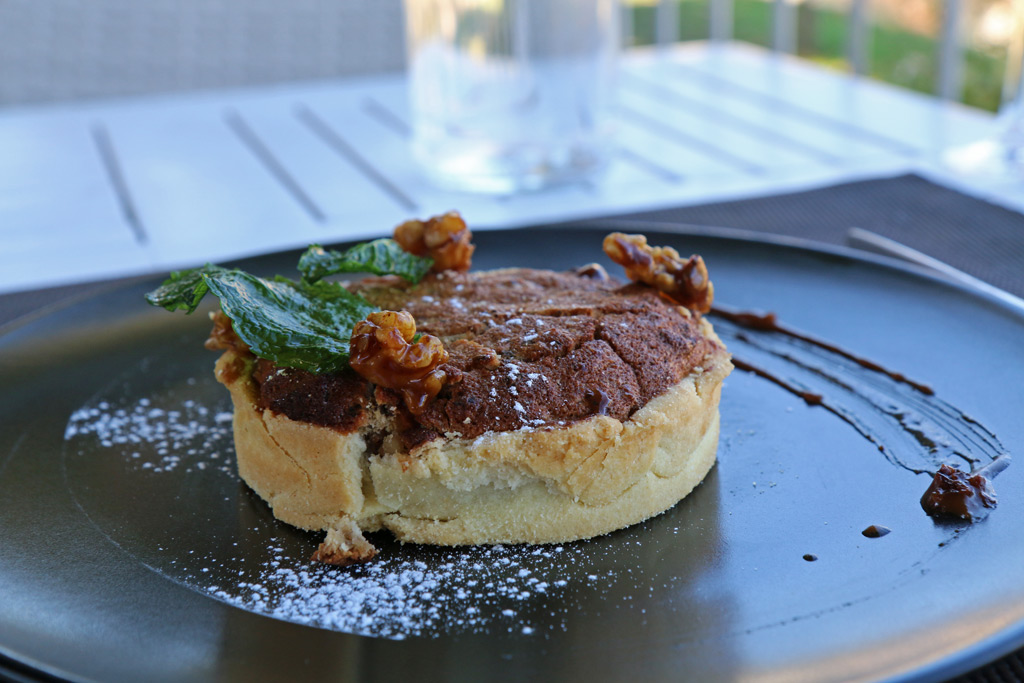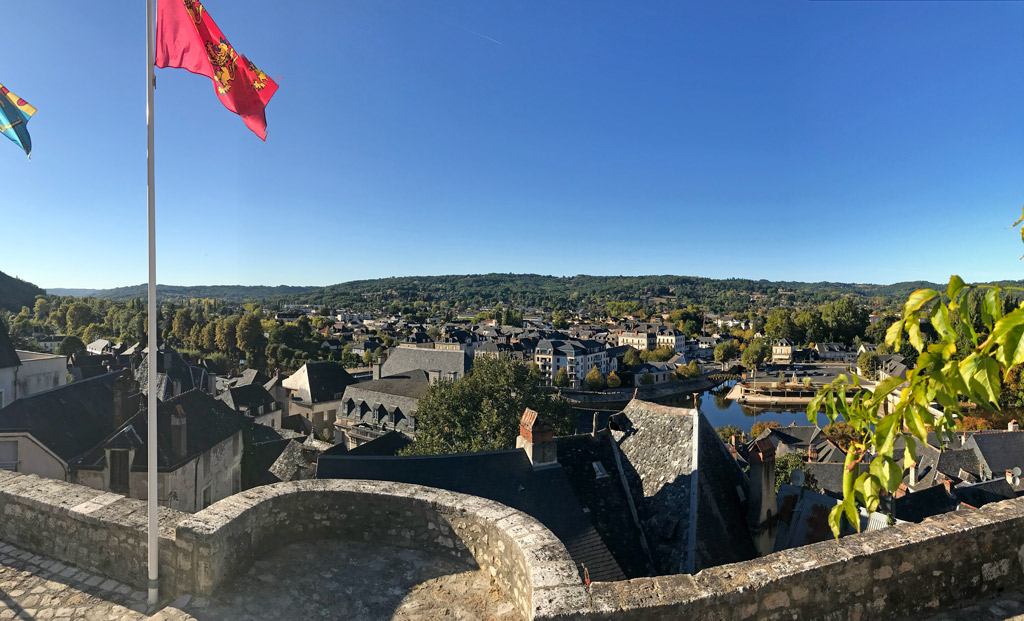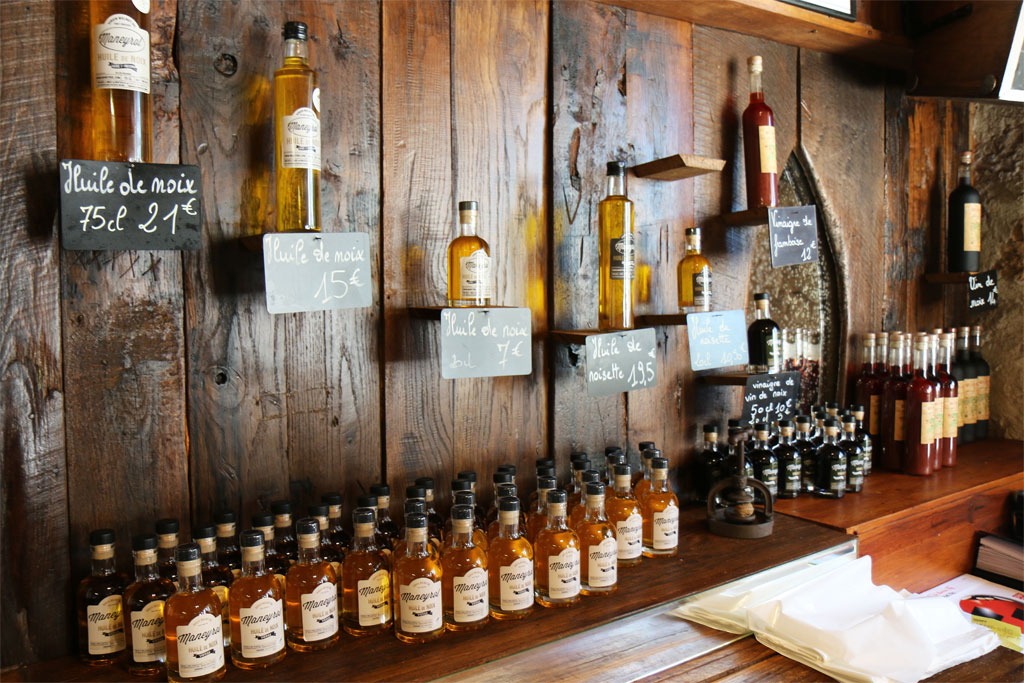- Home page
- Experiences to live
- Food Lover
- A roadtrip to discover the perigord walnut
- Food Lover
- Experiences to live
A roadtrip to discover the perigord walnut


Today, I’ll take you with me to discover the walnut of the Périgord! A delicious and not to be missed product, available all year thanks to the skill of the producers, harvesters and processors. A product that can trace its origins back to 17,000 years ago…The Périgord is a land full of history; and producing and consuming walnuts is an ancestral tradition that is perpetuated, not only for pleasure, but also for health as the walnut is very nutritious .
La Route de la Noix (The walnut road)
My mission is to introduce you to the walnut of the Périgord, and for this I decided to follow a small part of the Route de la Noix (Walnut Road). It is a tourist route crossing 3 departements: The Lot, the Dordogne and the Corrèze. 3 destinations offering many opportunities to learn more about the walnut; to see it, touch it and discover the full production chain. Did I forgot something? Of course! Tasting and enjoying it! Because the walnut is beautiful, good and so nutritious that we cannot live without it…
The walnut, delicious all year!
On the dedicated website, you can find a flyer (also available in the Tourist Office and in the tourist sites) to help you prepare for your roadtrip. There are different roads available, with several itineraries which are available depending on your location and constraints. The producers, harvesters, processors, restaurant managers and artisans (bakers, jam makers, chocolate makers…) who work with the Périgord walnut, are listed by theme and you can use this well made booklet so you do not miss a thing!
The small roads on the “Route de la Noix” (Walnut Road)
Firstly, I chose to have my lunch in a restaurant specialising in the confection of dishes and desserts with the Périgord Walnut. I am comfortably seated in « Aux Berges de la Vézère », in front of the superb town of Montignac Lascaux, just overlooking the Vézère River. I tasted a fantastic dish combining a walnut base bitter-sweet and rustic fudge, the suave crunchiness of the raisins and the smooth fondant silky paned foie gras. Walnut can also be found in drinks, so my dish was perfectly served with a sweet walnut wine. And for the dessert? The walnut tart… Tested and approved! In Perigord, each person has their own walnut tart recipe; sometimes it is thick with a crunchy pastry and a honey topping. Sometimes it is crumbly, with a shortbread pastry and a creamy mixture with whole pieces of walnut …Made with local produce and in an artisanal way, such as here, it is always delicious!
The Berges de la Vézère, in Montignac Lascaux
Comfortably installed, for a nice lunch!
Glazed walnut fudge, with raisins and crushed walnuts
Paned Foie gras to complete this trio of gourmet flavours
The delicate and rustic taste of the walnut, is perfect to complete the silky texture of the foie gras
Beautiful walnut tart for the dessert
The Périgord walnut, a booming PDO (protected designation of origin)!
I carried on my roadtrip towards Beauregard de Terrasson. I crossed Terrasson- Lavilledieu and took the opportunity to stopover and discover this beautiful town. The Route de la Noix, gives also the opportunity to discover tourist sites, very beautiful villages and typical towns in the Périgord. I climbed the hill to reach « Les Vergers de Beauregard », where Gilles introduced me to his orchard and his harvesting techniques of the famous walnuts. The walnut is a surprising tree: rustic and delicate at times, they live in harmony with their environment.
Terrasson and its shaped boxwood, do not miss “Les Jardins de l’Imaginaire” (The Imaginery gardens)!
The beautiful hills of Beauregard
The Vézère River flowing peacefully
Did you know? It is said that having a nap under a walnut tree can bring about headaches, sickness and maybe even a visit from the Devil. But why is that? This bad reputation comes from a toxine, Juglone produced by the leaves of the walnut tree. I don’t know about the headaches, but because of the Juglone few things grow at the foot of a walnut tree. Nature is amazing ;)
The walnut trees that you can see on the photos are between 40 and 50 years old, they prefer to grow on clay-limestone soil. Preferring a Northerly aspect they are at a perfect altitude, approximately 200 metres. The walnut trees are planted everywhere in Périgord, but those that are on the plains fear the frost and « start quicker ». If you know our region well, you will notice that the walnut trees are the last trees to sprout leaves and the first to loose them! Those which are in the plains offer a kernel with a different taste (beyond the fact they are a different variety) than those
planted on the hills.
The orchard of Beauregard
Gilles gives all the necessary explanations
If you wish to plant some at home, be aware that the walnut trees reach a maturity which allows the production of fruit at around 5 years old and start steady walnut supplies towards 7 or 8 years old. Correctly trimmed, they are elegant trees, they grow graciously and enjoy fully the light to deploy their beautiful foliage. The Noix du Périgord AOP are represented by 4 varieties: the Grandjean, the Franquette, the Marbot and the Corne. I will not rank them as everybody I met gave me different opinions on these varieties, it is all subjective and the best, is to taste them and form your own opinion ;) However be aware that the Corne and the Granjean are the oldest varieties, the growth of the tree is slower. The hull of the Corne is hard and thick, the Granjean is not and is often use to supply whole walnut kernels. The Franquette represents 80% of the orchards, this is therefore the one you will find the most on your way.
The 4 varieties of the PDO Noix du Périgord
Mechanisation has arrived in the walnut production. I had a preconception before I started my reporting, but it is not to increase or intensify the production, it is to reduce the hard work but also accelerate the harvest process, improving the quality of the fruit. The walnuts are always picked up on the floor, never on the tree. The green husk (the green envelope which protects the hull), come off the branch and fall. On good years, everything happens by itself: a big shower, a cold snap and they are ready to pick up! This year, it is mild and the trees needed to be « shaken » (with care) to encourage the husks to fall.
Walnut harvester
It is all about timing! The right season for the walnut
When the walnut is on the floor, it must be picked up quickly so the walnuts do not rot on the ground. A machine sweeps the ground, picks up the walnuts and rejects the leaves. The fresh walnut can only be kept for 8 to 10 days, this is the reason why you can rarely see them on the stalls of the markets! Once picked up, it must be stored in a cool place. Most of the harvest is therefore dried.
Walnuts fallen on the floor, in their husk
Fresh walnuts
Once harvested, the walnut goes through a drum and sprayed with water, which separates the husk from the hull and washes the hull at the same time. Then, it is manual work, the walnuts are placed on a rolling carpet, then sorted by size (sometimes there is also still some husk). Then, they are placed in a giant basket with a fan system, which drys the walnuts for several days! This is the way they are preserved: dried.
The walnut must be separated from the husk
The walnuts go through the drum which cleans them and remove the husk
The dried walnuts serve different purposes:
- Direct sales for private individuals, via markets, producers or fruits and vegetablesshops.
- Preparation company to break the walnuts, put them in bags and sell the kernels ormake other preparations such as powder, dough, flour…
- Processing company, which prepare products such as walnut oils, walnut beer, wine, vinegar or make cakes and other specialities.
The walnut is excellent for your health and has fully benefited from the revival for
dried fruits, brought by the organic, vegetarian and vegan food lovers. Rich in Omega
3, the walnut is invigorating and helps lower cholesterol levels, it is also full of
vitamins and oligoelements. Rich in unsaturated fat, they are not fattening so eat as
many as you like! Children and athletes can put some in their rucksack everyday.
The dried walnuts are sold to private individuals in nets
Does cracking them and shelling them put you off eating them? They can be found in ready to eat kernels. The kernel of the Noix du Périgord is the only one with a PDO! Or think about the walnut oil, it is the last stopover on my road-trip: I am going to the Moulin de Maneyrol in Pazayac, near Terrasson.
Charly took over this mill few years ago and developed the awareness of this unique quality oil. It is the production technique which gives the oil its unmatched flavour… The kernels, all carefully chosen, are slowly crushed in a grindmill, then heated slowly to roast the nut paste, making it soft. The oil is extracted from the paste by a hydraulic press, which guarantees a perfect conservation of the properties of the precious liquid. At the end, only the press cake is left, composed of the flesh and skin of the walnuts, compacted and exempt of humidity. The oil is then bottled up and sold on site or (fortunately for the enthusiasts!) on line . Charly has competed with his oil and won several gold and silver medals at the Concours Général Agricole, not surprising! While I was in the shop, regular customers from all over France keep rolling to do their annual
restock of this fantastic golden oil…
Charly explaining to me all about walnuts and the oil transformation
The walnut is broken in the machine, with this instrument which preserves the kernel.
The stainless steel crushes the kernels.
The dough is then heated and pressed in a hydraulic press to extract the oil.
This is what is left at the end of the process!
The walnut oil and other by-products: liqueur, wine and vinegar. There is also beer and dough …
It is the end of my roadtrip, my mind is full of information and my arms are full of walnuts and the by-products, I invite you to take the Route de la Noix to discover the sacred fruit of the Dordogne!
FURTHER INFORMATION
- The Noix du Périgord’s website
- The flyer on the Route de la Noix (Walnut Road) (downloadable version)
- Our reportage on the Ecomusée de la Noix in Castelnaud-la-Chapelle
Sponsored article
OUR CITY GUIDES IN EUROPE




















